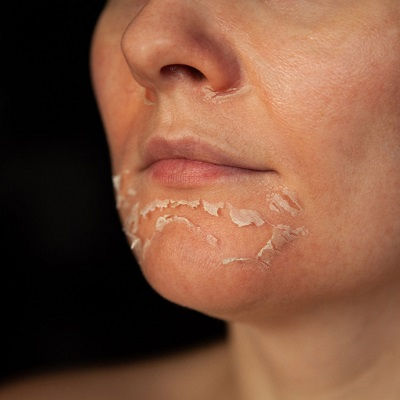How TCA Peel Compares to Laser for Skin Rejuvenation
- aliza khan
- Jun 17
- 5 min read
In today’s world of advanced skincare, people are increasingly seeking effective treatments that offer real and lasting results for skin rejuvenation. Two of the most commonly discussed options are TCA peels and laser treatments. Each approach brings its own strengths, and knowing how they compare can help individuals make an informed choice based on their skin concerns, recovery preferences, and long-term goals.
For those exploring options for TCA Peel Oman, it’s especially important to consider how it stacks up against laser treatments in terms of results, downtime, cost, and safety in different climates and skin types. This article offers a clear and comprehensive comparison between these two popular skin rejuvenation treatments.
What Is a TCA Peel?
A TCA (trichloroacetic acid) peel is a chemical exfoliation treatment that targets the upper and middle layers of the skin. It is used to treat:
Fine lines and wrinkles
Acne scars and post-acne marks
Pigmentation and melasma
Uneven skin tone and texture
The peel works by chemically removing damaged surface skin cells, encouraging cell turnover and stimulating collagen production in the deeper layers of the skin. After the treatment, the skin peels over several days, revealing fresher, brighter, and smoother skin underneath.

What Is Laser Skin Rejuvenation?
Laser skin rejuvenation uses focused light energy to penetrate the skin layers and stimulate natural repair processes. There are two primary types of lasers used for cosmetic skin improvement:
Ablative lasers (e.g., CO2, Er:YAG): Remove outer layers of the skin.
Non-ablative lasers (e.g., Nd:YAG, fractional lasers): Work below the surface without removing skin.
Laser treatments are often used to address:
Deep wrinkles and scars
Severe sun damage
Vascular lesions or pigmentation
Skin laxity and dullness
Like chemical peels, lasers encourage collagen growth and improve skin texture over time.
Comparing Results: TCA Peel vs. Laser:
1. Depth of Treatment and Target Concerns:
TCA Peel: Best for surface-level concerns such as mild acne scars, age spots, rough texture, and fine lines. It can also address pigmentation irregularities.
Laser Treatment: More suitable for deeper wrinkles, severe sun damage, vascular issues (like spider veins), and deeper acne scarring. Lasers can also help tighten skin, which TCA peels do less effectively.
Verdict: For moderate skin issues and pigmentation, TCA peels are effective and less invasive. For deeper correction and advanced aging, laser may be more appropriate.
2. Recovery and Downtime:
TCA Peel: Recovery varies by strength. A medium-depth peel typically requires 5–10 days of downtime, during which the skin will flake and peel. Redness may last longer.
Laser Treatment: Ablative lasers may require 1–2 weeks of healing and can cause significant redness, swelling, and oozing. Non-ablative lasers have shorter downtimes, around 3–5 days, but often need more sessions.
Verdict: TCA peels offer quicker and more manageable recovery compared to aggressive laser treatments.
3. Pain and Discomfort:
TCA Peel: Causes mild to moderate stinging or burning during application, which subsides within minutes. After the treatment, the skin may feel tight and sensitive.
Laser Treatment: Non-ablative lasers feel like small zaps, often tolerated well with topical numbing. Ablative lasers may be more painful and often require cooling devices or local anesthesia.
Verdict: TCA peels are generally less painful than ablative laser treatments.
Climate Consideration: Which Is Better for Oman?
Living in a sunny and often humid climate like Oman has specific implications for skin treatments:
TCA Peel in Oman is generally safe when performed under professional care with good post-treatment sun protection. It’s important to avoid sun exposure during healing to prevent post-inflammatory hyperpigmentation (PIH).
Laser treatments, especially those involving heat (like ablative lasers), may increase the risk of pigmentation issues in darker skin types and under harsh sun conditions. Some lasers are safer than others, but careful aftercare is essential.
Verdict: For many residents in Oman, TCA peels may offer a gentler, safer option with fewer complications, especially for medium to darker skin tones.
Cost and Accessibility:
TCA Peel: Typically more affordable, especially since it doesn’t require high-tech machinery. It’s widely available in aesthetic clinics across Oman.
Laser Treatment: Generally more expensive due to equipment, technical expertise, and multiple session requirements.
Verdict: TCA peels offer a budget-friendly option with impressive results for those who don’t need deep-level correction.
Which Treatment Lasts Longer?
Both treatments improve collagen production and skin renewal, but results are not permanent. Maintenance is key:
TCA Peel: Can be repeated every 4–6 weeks in a series, with maintenance peels a few times a year.
Laser Treatments: Fewer sessions may be needed for lasting improvement, but results still require maintenance over time.
Verdict: Both can be long-lasting, but consistency and proper skin care determine the longevity of results.

Combination Treatments:
It’s worth noting that TCA peels and laser treatments don’t have to be mutually exclusive. Many advanced skincare protocols combine the two in alternating sessions to maximize benefits:
TCA peel for brightening and exfoliation
Laser for tightening and deep scar treatment
A consultation at a qualified clinic in Oman can help design the best plan based on your skin’s condition and goals.
FAQs:
1. Is TCA peel better than laser for sensitive skin?
Yes, for those with sensitive or reactive skin, TCA peels (especially in lighter strengths) may be better tolerated than laser treatments, which can sometimes cause inflammation.
2. Can TCA peels be used on darker skin tones?
es, with proper pre-treatment and post-care, TCA peels can be safely used on darker skin. A lower concentration and gradual approach help reduce the risk of pigmentation.
3. How soon can I wear makeup after a TCA peel or laser treatment?
After a TCA peel, makeup should be avoided until the peeling stops (usually around 7 days). For laser treatments, makeup is typically avoided for at least 5–10 days, depending on the intensity.
4. Do TCA peels or laser treatments require multiple sessions?
Yes, both treatments work best in a series. TCA peels may need 3–6 sessions, while laser treatments (especially non-ablative ones) often require 4–5 spaced sessions.
5. Is one treatment safer for long-term skin health?
Both are safe when done by experienced professionals. TCA peels are generally gentler, making them more suitable for ongoing maintenance in environments like Oman.
6. Which is better for acne scars—TCA or laser?
Laser may offer deeper correction for old or deep acne scars, but TCA peels are also highly effective for shallow scarring, discoloration, and surface texture. In some cases, combining both may yield the best outcome.
Final Thoughts:
When it comes to skin rejuvenation, the choice between TCA peel and laser depends on multiple factors: skin type, depth of damage, lifestyle, budget, and recovery tolerance. Both offer excellent benefits when used appropriately and can enhance the skin’s natural glow, firmness, and clarity.



Comments